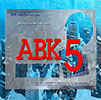Державне підприємство
«Український науково-дослідний і навчальний центр
проблем стандартизації, сертифікації та якості»
(ДП «УкрНДНЦ»)
Наказ від 07.08.2017 №213
IEC/TR 62271-306:2012
High-voltage switchgear and controlgear —
Part 306: Guide to IEC 62271-100, IEC 62271-1
and other IEC standards related to alternating current circuit-breakers
прийнято як національний стандарт
методом підтвердження за позначенням
ДСТУ IEC/TR 62271-306:2017
(IEC/TR 62271-306:2012, ЮТ)
Пристрої контрольні розподільчі високовольтні.
Частина 306. Настанова щодо ІЕС 62271-100, ІЕС 62271-1 та інших стандартів ІЕС, пов’язаних з автоматичними вимикачами змінного струму
High-voltage switchgear and controlgear -
Part 306: Guide to IEC 62271-100, IEC 62271-1 and other IEC standards related to alternating current circuit-breakers
C o n t e n t s
FOREWORD......................15
1 G eneral............................. 17
1.1 Scope.......................................17
1.2 Normative references.......................... 17
2 Evolution of IEC standards for high-voltage circuit-breaker................ 18
3 Classification of circuit-breakers..............................22
3.1 G eneral.............................................. 22
3.2 Electrical endurance class E1 and E2.................................... 22
3.3 Capacitive current switching class C1 and C 2 ...................23
3.4 Mechanical endurance class M1 and M 2......... 23
3.5 Class S1 and S2..................................24
3.5.1 General .......................................24
3.5.2 Cable system .................................. 24
3.5.3 Line system ...................................24
3.6 Conclusion ...................................... 24
4 Insulation levels and dielectric tests .................... 25
4.1 General ...................................... 25
4.2 Longitudinal voltage stresses .............................28
4.3 High-voltage tests .......................... 28
4.4 Impulse voltage withstand test procedures.....................29
4.4.1 G eneral.............................29
4.4.2 Application to high-voltage switching devices........... 29
4.4.3 Additional criteria to pass the te s ts .............30
4.4.4 Review and perspective.......................30
4.4.5 Theory .................................. 33
4.4.6 Summary of 15/2 and 3/9 test methods................ 36
4.4.7 Routine te s ts ...................... 37
4.5 Correction factors..................... 37
4.5.1 Altitude correction factor..................37
4.5.2 Humidity correction factor .................. 40
4.6 Background information about insulation levels and tests ..............41
4.6.1 Specification......................... 41
4.6.2 Testing .........................43
4.6.3 Combined voltage tests of longitudinal insulation................. 43
4.7 Lightning impulse withstand considerations of vacuum interrupters ............ 44
4.7.1 General ........................44
4.7.2 Conditioning during vacuum interrupter manufacturing .........44
4.7.3 De-conditioning in service....................... 45
4.7.4 Re-conditioning in service.............................. 45
4.7.5 Performing lightning impulse withstand voltage tests ................. 45
5 Rated normal current and temperature rise...... 45
5.1 General ..................... 45
5.2 Load current carrying requirements .................45
5.2.1 Rated normal current ................................45
5.2.2 Load current carrying capability under various conditions of ambient
temperature and load................................46
5.3 Temperature rise testing..................... 49
5.3.1 Influence of power frequency on temperature rise and temperature
rise te s ts ..................................................... 49
5.3.2 Test procedure................................49
5.3.3 Temperature rise test on vacuum circuit-breakers..........51
5.3.4 Resistance measurement ................ 52
5.4 Additional information.........................52
5.4.1 Table with ratios I a/Ir...................................52
5.4.2 Derivation of temperature rise equations.................52
6 Transient recovery vo lta g e ...................................... 53
6.1 Harmonization of IEC and IEEE transient recovery voltages............ 53
6.1.1 G eneral..............................53
6.1.2 A summary of the TRV changes........................54
6.1.3 Revision of TRVs for rated voltages of 100 kV and above....... 57
6.1.4 Revision of TRVs for rated voltages less than 100 kV .............. 60
6.2 Initial Transient Recovery Voltage (ITRV)......................62
6.2.1 Basis for specification.......................................62
6.2.2 Applicability ......................................63
6.2.3 Test duties where ITRV is required ...............63
6.2.4 ITRV w aveshape.............................64
6.2.5 Standard values of ITRV......................64
6.3 Testing ..................................... 65
6.3.1 ITRV measurement.................. 65
6.3.2 SLF with IT R V ..............................66
6.3.3 Unit testing ...........................67
7 Short-line faults ....................................67
7.1 Short-line fault requirements .....................67
7.1.1 Basis for specification................67
7.1.2 Technical comment................. 68
7.1.3 Single-phase faults....................... 68
7.1.4 Surge impedance of the line ......................68
7.1.5 Peak voltage factor...................... 69
7.1.6 Rate-of-Rise of Recovery Voltage (RRRV) factor "s"...... 71
7.2 SLF testing.................................................. 72
7.2.1 Test voltage.............................................72
7.2.2 Operating sequence ......................... 72
7.2.3 Test duties ...........................................72
7.2.4 Test current asymmetry .............. 73
7.2.5 Line side time delay.................... 74
7.2.6 Supply side circuit ......................74
7.3 Additional explanations on SLF .......... 75
7.3.1 Surge impedance evaluation...............75
7.3.2 Influence of additional capacitors on SLF interruption ......75
7.4 Comparison of surge impedances........... 80
7.5 Calculation of actual percentage of SLF breaking currents ........81
7.6 TRV with parallel capacitance............ 82
8 Out-of-phase switching ...................................... 85
8.1 Reference system conditions............... 85
8.1.1 General .........................85
------------------------------------------------------------
Данний документ, придатний для використання і в повному об'ємі знаходиться в ІДС "Зодчий"
Детальніше про Інформаційно-Довідкову Систему "Зодчий"
Інформаційно-довідкова система (ІДС) «ЗОДЧИЙ» - це база даних нормативно-правових документів у галузі будівництва, створена у відповідності до замовлень Міністерства архітектури України № 29 від 15.02.1994р. і № 43 від 09.03.1994 р. Це найпопулярніший на сьогодні ліцензійний збірник будівельних детальних документів України (зі змінами та доповненнями).
Базові будівельні нормативні документи ІДС "Зодчий" визнані всіма офіційними органи, мають силу печатних офіційних видань БНіП (СНИП), ГОСТ, ДБН, ДСТУ, ВБН (ВСН), ДНАОП, при цьому доступні за ціною та зручніші в зберіганні та використанні.


